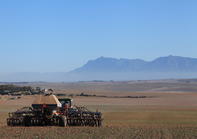Production records are used as part of recordkeeping in farming to help with the management of a farm. Farm management includes the planning of crops and breeding of animals, keeping track of crops/livestock performance and being able to plan production based on the previous season’s production records.

Recordkeeping and production records in farming provide the foundation from which a farmer operates. Production records are useful to identify production problems so that farm performance can be improved.
The most common production records used are crop cultivation records, livestock production, labour and machinery records.
Types of Production Records
Production records can be in the form of a simple spreadsheet indicating, for example, month, crop type, planting and harvest date, livestock type, yield, the market delivered to and selling price per kg. Production records can also be more complex and include more detail. A few examples are listed below.
Crop cultivation records
This document can include all the various fields or orchard numbers, production size, yield potential and soil analyses of the land used for that specific crop or fruit. Other items included in the crop cultivation records are fertilisation, seeding, cultivation methods, weed and pest control, time of application and crop yields.
Livestock production records
All information related to livestock farming should be included here. Examples are feed, medicine dosing, marketing costs and individual animal records such as milk production, calving records, wool production, weaning mass and weight gains. The opening and closing numbers of livestock should be grouped according to their age and gender, for example, bulls, cows and one to two-year-old heifers.
Labour records
Labour matters such as service contracts of staff, wages received, rations, medical costs and worker’s compensation are recorded in the labour records. Other items that should be included are the number of labourers, loans, debts, leave and absences.
Machinery records
Machinery information is included in the machinery records and should include details such as model type, age, book value, repairs, service records, hours worked and insurance.
Source Water Research Commission